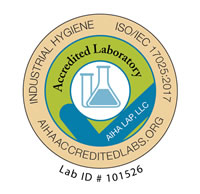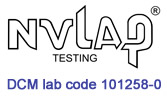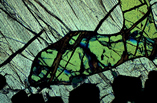Microscopy
DCMSL considers the light microscope to be one of the most important basic tools in a laboratory. Analytical microscopy draws on techniques used in the fields of geology, chemistry, biology and forensics. Microscopy provides rapid, non-destructive analysis and requires very little material. Optical properties of materials are identified and may be compared to the properties of known standards.
DCMSL has a wide variety of microscopes and accessories to solve problems or provide standard analyses:
- Stereo binocular microscope. A low power microscope (6 to 80X) used for sample observation, manipulation, and preparation. Lighting systems include inclined incident, coaxial incident and fiber optic illuminators.
- Phase contrast microscope. A transmitted light microscope (40 to 1000X) used for observation and identification of structures in materials with very low relief.
- Polarized light microscope. A transmitted light microscope (40 to 1000X) used for observation and identification of non-opaque materials.
- Reflected light microscope. An incident light microscope (50 to 1000X) used for observation and identification of opaque materials.
- Swift point counter. An attachment to the microscope which enables an analyst to count and tally particles and/or fibers by use of an automated stage and microprocessor.
- Spindle stage. An attachment to the microscope which enables an analyst to take accurate measurements of refractive indices in a crystal.
DCMSL microscopy capabilities are useful in the following industries:
Environmental and Industrial Hygiene
Identification and quantitation of airborne and bulk materials, including:
Asbestos Analysis
Bulk/Building Material Sample Analysis:
EPA 600/R-93/116 and EPA 600/M4-82-020
NESHAP EPA 450/3-90-017
AHERA
Air Filter Analysis for Asbestos and other Fibers
NIOSH 7400
OSHA Reference Method
Other Environmental Applications:
Dust and particulate analysis
Air quality and contamination studies
Identification
Sizing
Concentration
Mining and Mineral Applications
Identification and quantitation of unknown minerals in ore or industrial mineral deposits including:
Mineral Identification
Refractive Index Determinations
Grain Size, Shape and Aspect Ratio Analysis
Petrographic and Petrofabric Analysis of Rocks
Modal Analysis of Rocks
Alterations and Weathering History of Rocks and Minerals
Asbestos Analysis of Mine Samples
Point of Liberation Studies of Ores
Metallurgical Analysis
Structural/Geotechnical Engineering Applications
Evaluation of the strengths and weaknesses of different building materials:
Soils and Bedrock
Building Stones and Concrete
Failure Analysis
Petrographic Analysis of Concrete Aggregates
ASTM Method C295
Other Industries
Concrete and Construction
Sand and Gravel
Paints and Coatings
Ceramic and Glass Production
Agriculture and Soil
Pharmaceuticals
Pulp, Paper and Textiles
Other Applications for Microscopy
ID of Unknown Materials,
Comparative Studies
Product ID
Fiber ID
Aspect Ratio Studies



